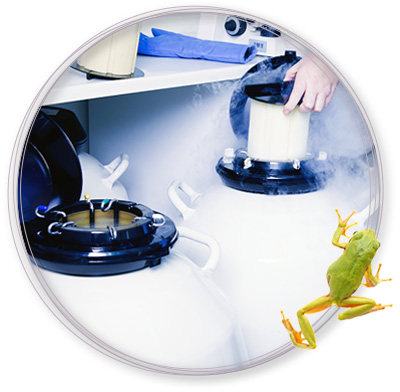After the sperm cell enters the cell interior, the egg cells can be deep-frozen in the so-called pronuclear stage, i.e. before the fusion of the mother’s and father’s chromosomes. The advantage of this is that these egg cells can be used in further cycles without hormone stimulation and surgical egg retrieval. The prospects of success of the individual stimulated treatment cycle can be increased in this way.
Technique
After complete dehydration by a “cryoprotectant”, fertilised egg cells in the pronuclear stage are slowly immersed in liquid nitrogen (-196°C) within two hours. There, they rest in portions (generally two to three egg cells) in so-called straws. They can be stored in liquid nitrogen indefinitely.
Thawing
In the thawing process, the deep-frozen straws are gradually heated up to a room temperature of 37°C, the egg cells are flushed out and incubated for a further four days. During this period, nuclear fusion takes place with the formation of the embryo. The subsequent cell divisions lead to the creation of a blastocyst in the best case (Greek: blastos = sprout and kystis = bladder).
Four days after thawing, the embryos are transferred into the uterine cavity.
In most cases, the mucous membrane is built up by oestrogen tablets for the transfer of the cryopreserved cells. When the egg cells are thawed, the luteal phase is also supported with progesterone tablets.
